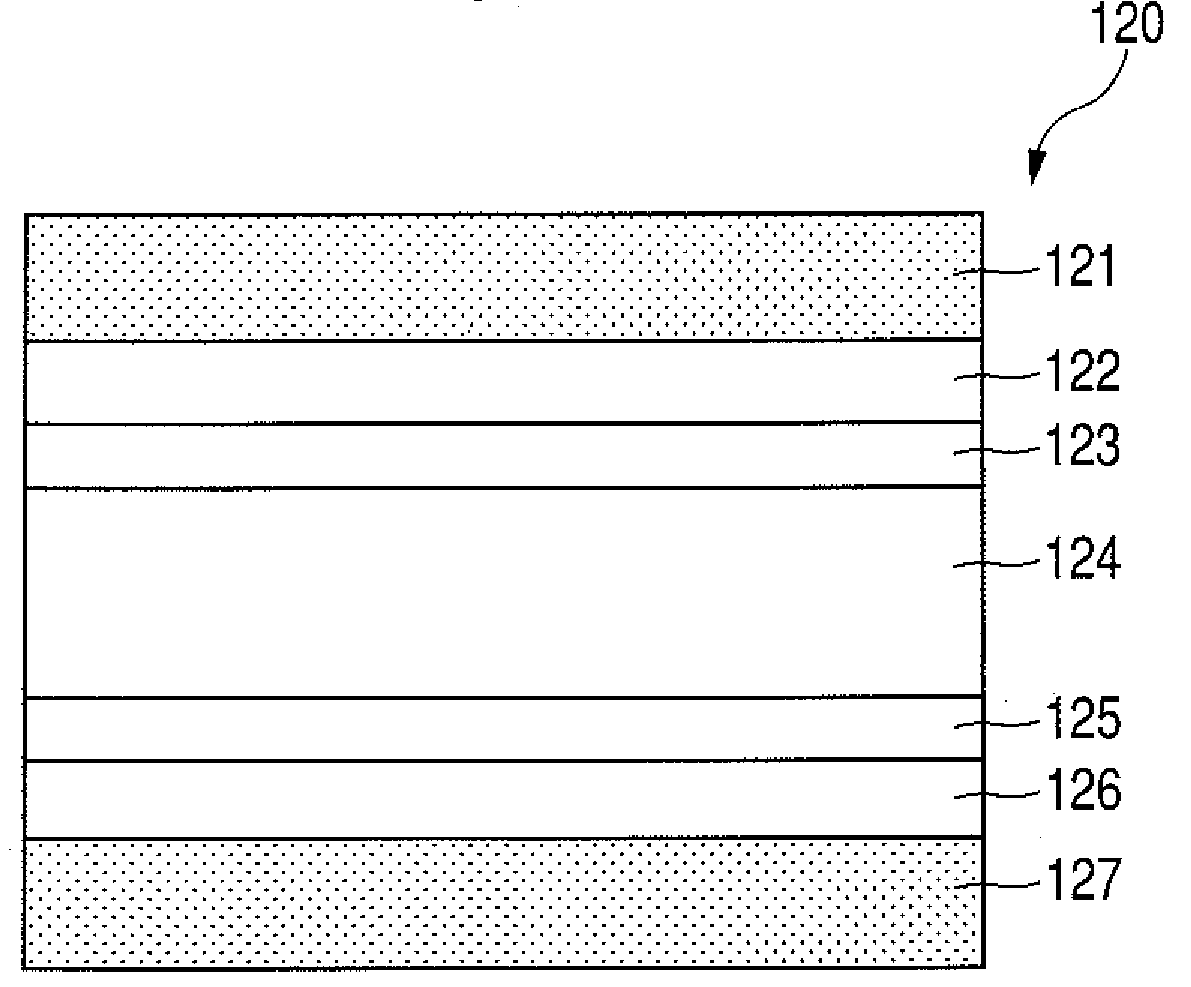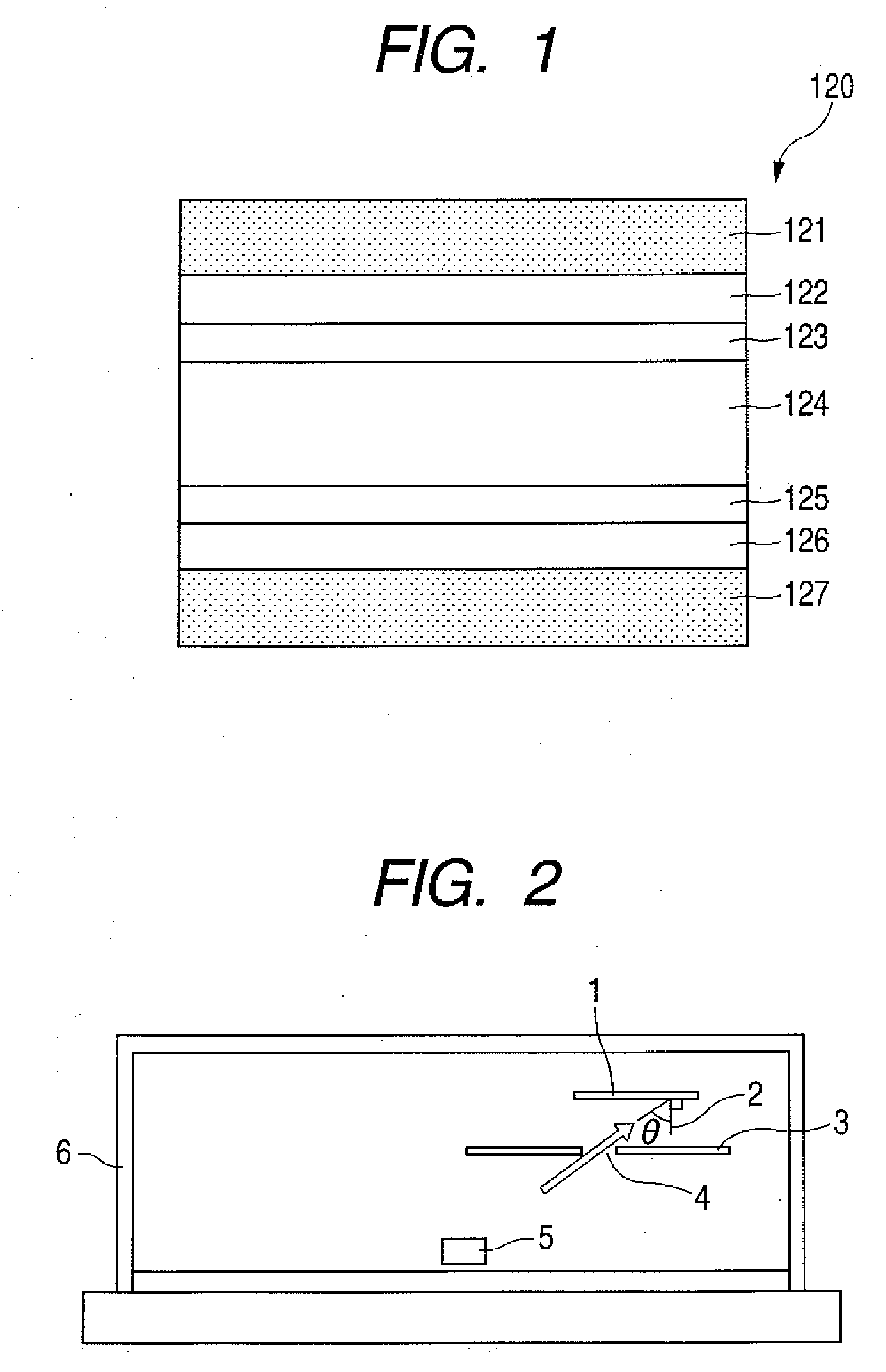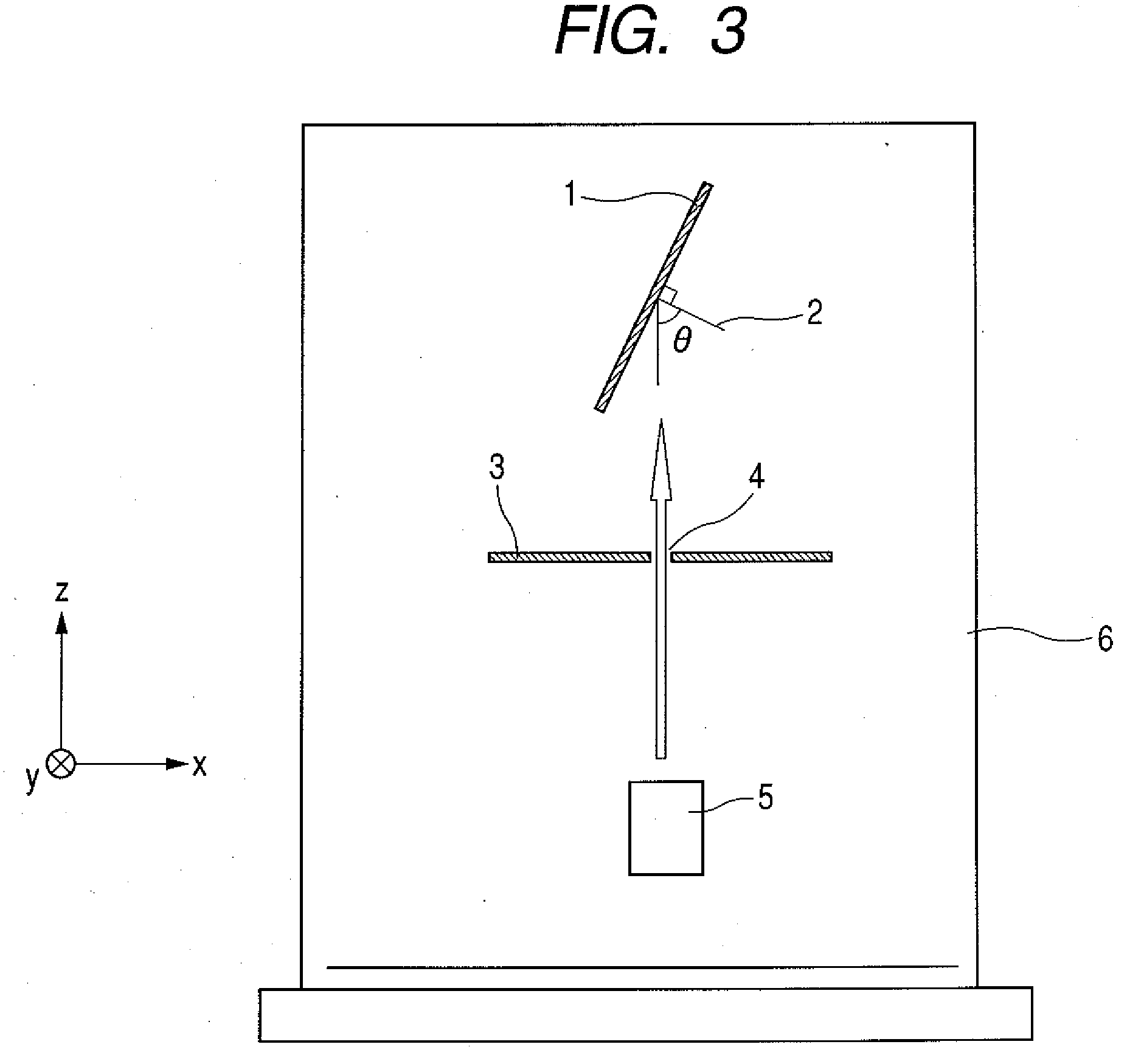Liquid crystal display device
a liquid crystal display and display device technology, applied in the manufacture of electrode systems, electric discharge tubes/lamps, instruments, etc., can solve the problems of shortening the life of the device, affecting the display quality, and affecting the quality of the display, so as to achieve the effect of high-quality image, variation in the orientation of vapor deposition, and without lowering the contras
- Summary
- Abstract
- Description
- Claims
- Application Information
AI Technical Summary
Benefits of technology
Problems solved by technology
Method used
Image
Examples
example 1
[0101]In this example, the alignment films 123, 125 are formed by the vapor deposition apparatus of the configuration as shown in FIG. 2 to produce a liquid crystal element. At this time, the distance between the vapor deposition source 5 and the substrate 1 is set to 1 meter. The liquid crystal element is used to obtain a projection type liquid crystal display device.
[0102]With respect to an optical system of the projection type liquid crystal display device, two types of optical systems, an optical system for making a linearly polarized light enter the liquid crystal element and an optical system for making a circularly polarized light enter the liquid crystal element, are compared with each other.
[0103]In the case of the projection type liquid crystal display device using the linearly polarized light, a variation in contrast is caused according to the attached liquid crystal element. On the other hand, in the case of the projection type liquid crystal display device using the cir...
example 2
[0104]In this example, an alignment film is formed on one of the substrates by the vapor deposition apparatus shown in FIG. 2 and an alignment film for vertical alignment is formed on the other substrate by using an apparatus of the configuration conceptually shown in FIG. 13 through constant-speed rotary oblique vapor deposition method of rotating the substrate 1 at a constant speed during vapor deposition as indicated by an arrow 8 in FIG. 13. Incidentally, in each film formation, the distance between the vapor deposition source and the corresponding substrate is set to 1 meter. A projection type liquid crystal display device is assembled using the thus produced liquid crystal element.
[0105]A circularly polarized light is used as the polarized light for incidence on the liquid crystal element. As a result, there is obtained an image which has high uniformity and no variation in display due to the liquid crystal element.
example 3
[0106]In this example, an optical system shown in FIG. 14 is used instead of the optical system shown in FIG. 12.
[0107]In FIG. 14, a light emitted from a light source 50 is converted into a linearly polarized light by passing though a linearly polarizing plate 51 and then converted into a circularly polarized light by passing through a quarter-wave plate (λ / 4 plate) 52. Thereby, a liquid crystal element 120 is irradiated with the circularly polarized light.
[0108]In the case of an alignment state in which there is no retardation of the liquid crystal layer, the light is reflected in a state of the circularly polarized light by a reflecting plate (not shown) contained in the liquid crystal element 120. The circularly polarized light passes through the λ / 4 plate 52 again to be converted into a linearly polarized light. At this time, the linearly polarized light becomes to have a polarization state of a polarization direction perpendicular to that of the incident polarized light. After ...
PUM
| Property | Measurement | Unit |
|---|---|---|
| pretilt angles | aaaaa | aaaaa |
| pretilt angles | aaaaa | aaaaa |
| pretilt angles | aaaaa | aaaaa |
Abstract
Description
Claims
Application Information
 Login to View More
Login to View More - R&D
- Intellectual Property
- Life Sciences
- Materials
- Tech Scout
- Unparalleled Data Quality
- Higher Quality Content
- 60% Fewer Hallucinations
Browse by: Latest US Patents, China's latest patents, Technical Efficacy Thesaurus, Application Domain, Technology Topic, Popular Technical Reports.
© 2025 PatSnap. All rights reserved.Legal|Privacy policy|Modern Slavery Act Transparency Statement|Sitemap|About US| Contact US: help@patsnap.com



